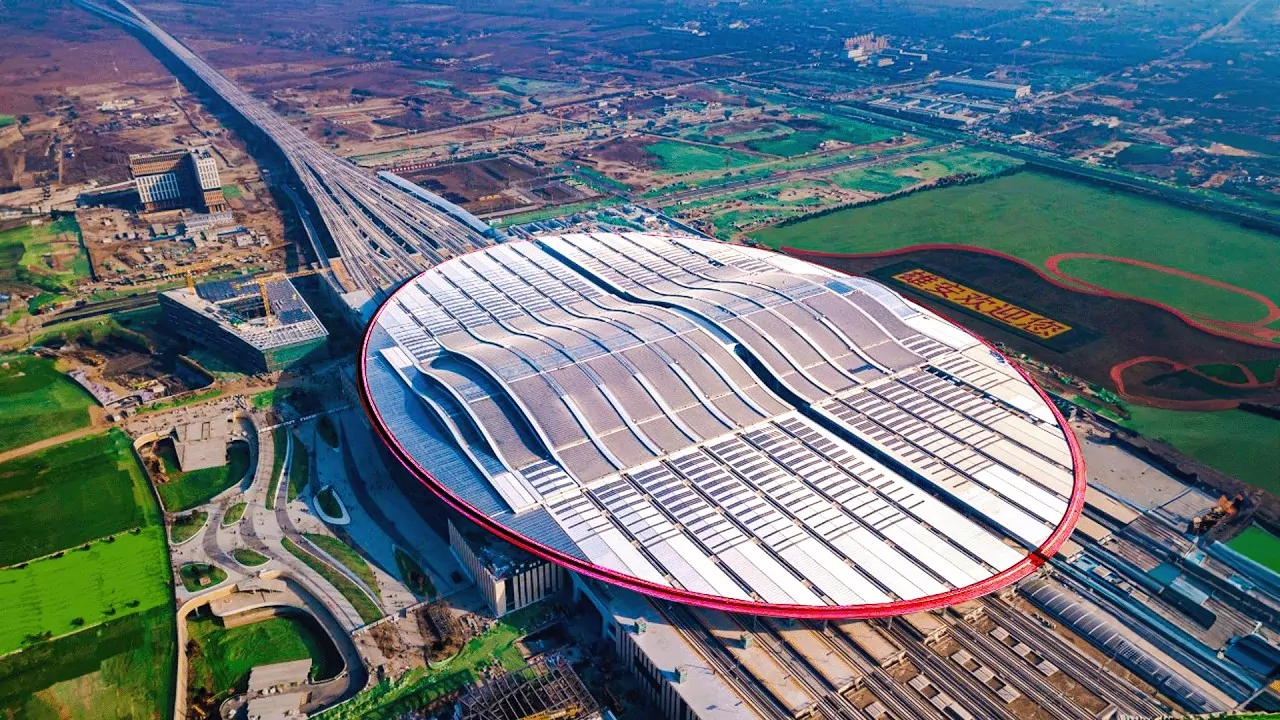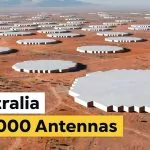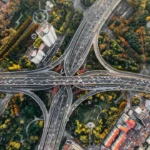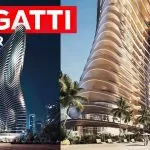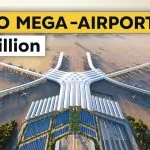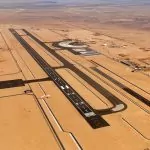The world is full of massive, groundbreaking construction projects. From California’s $130 billion High-Speed Rail to Saudi Arabia’s Line, these projects are changing the landscape of our planet. But there are many more megaprojects around the world, like the $95 billion Xiong’an Smart City. In just seven years, they have built 3,000 buildings from the ground up, with digital roads collecting traffic data to calculate the fastest routes for emergency services.
These megaprojects are literally shaping our planet, so today we uncover the biggest of them all. Hi, welcome to FundFlix, and here are the most expensive megaprojects currently being built.
Advertisement:
$11B, Stuttgart 21
We start with our number 15 at an estimated cost of $11 billion: Germany’s massive transport upgrade known as Stuttgart 21. The idea here is to completely redesign Stuttgart’s existing rail system by rotating the whole train station 90 degrees and moving it underground. Until now, trains could only enter and exit on one side.
By turning the station, trains will be able to pass through as they continue their journey. Instead of being the end of the line, Stuttgart will become part of a direct Paris-Budapest train link that the EU is working on to improve connectivity across the continent.
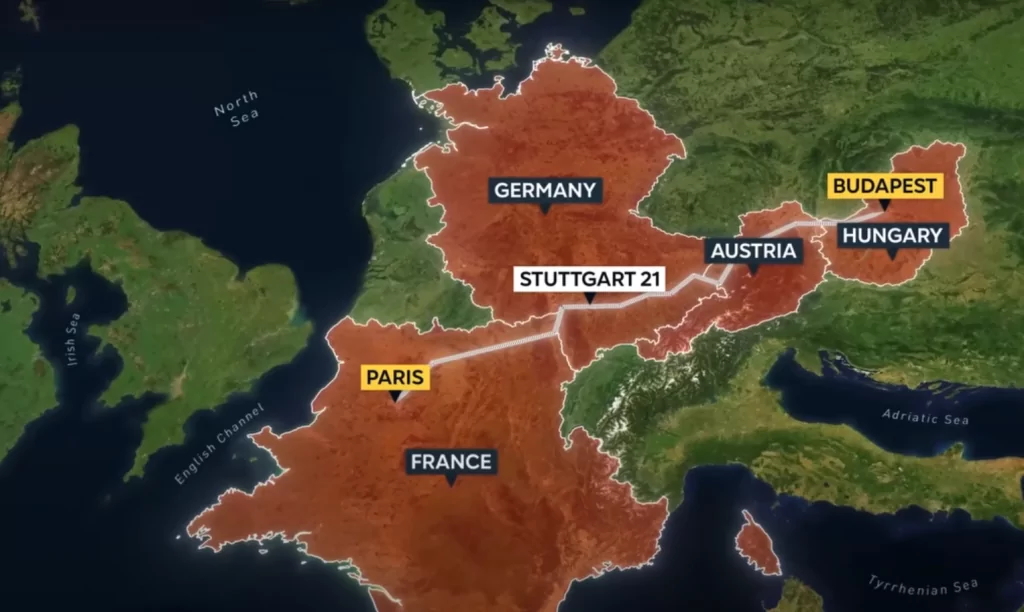
The new station will be covered by 10 acres of public park and supported by 28 enormous, chalice-shaped pillars. Each one needed 350 metric tons of steel and 685 cubic meters of concrete to build. Light will come from 23 enormous glass domes that open onto the park, making the station bright and open despite being underground.
Additionally, 56 kilometers of tunnels have been dug under the city.
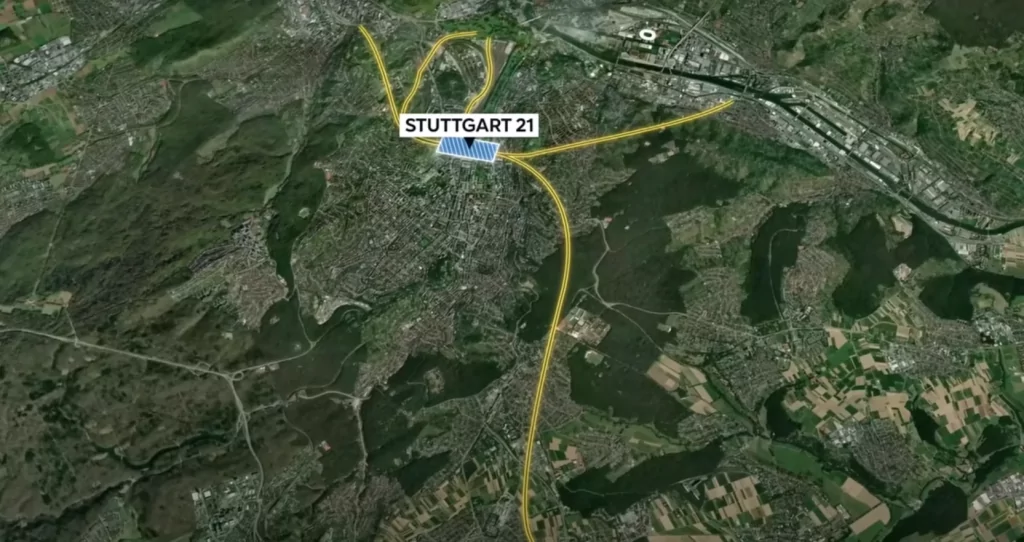
Stuttgart sits on soluble rock like limestone, meaning that water erosion has created huge underground caverns and sinkholes. Tunneling through that required precision engineering and advanced techniques to avoid destabilizing the city above.
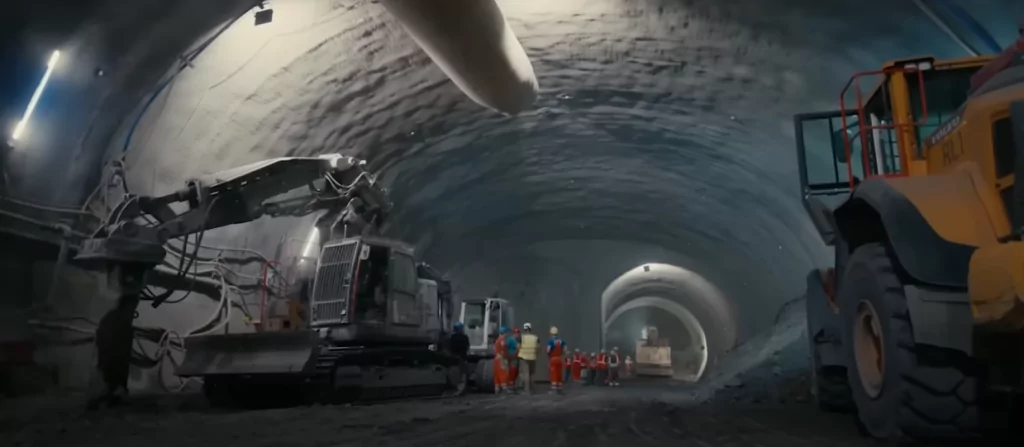
However, planning has not gone smoothly. Recently, another delay was announced, pushing the operation start to December 2026—seven years later and twice as expensive as originally planned.
Advertisement:
$12.2B, BART Silicon Valley Phase 2
Next up, we take a look at the United States. This one’s in California and is known as BART, which stands for Bay Area Rapid Transit District. It comes in just above Stuttgart 21 with a budget of $12.2 billion. Phase II of the project is currently under construction and will extend BART’s Silicon Valley network under downtown San Jose all the way to Santa Clara.
It’s only 10 km, but the new route will connect Santa Clara to the rest of the BART network and boost economic development across the region. The line is expected to carry over 54,000 passengers per day once it’s finished in 2036. The tunnel needs to be dug under densely packed urban areas, avoiding existing infrastructure like sewage and electrical systems and causing minimal disruption to the local population. The Bay Area is also prone to earthquakes, so specialized construction techniques and strict regulations are slowing things down.
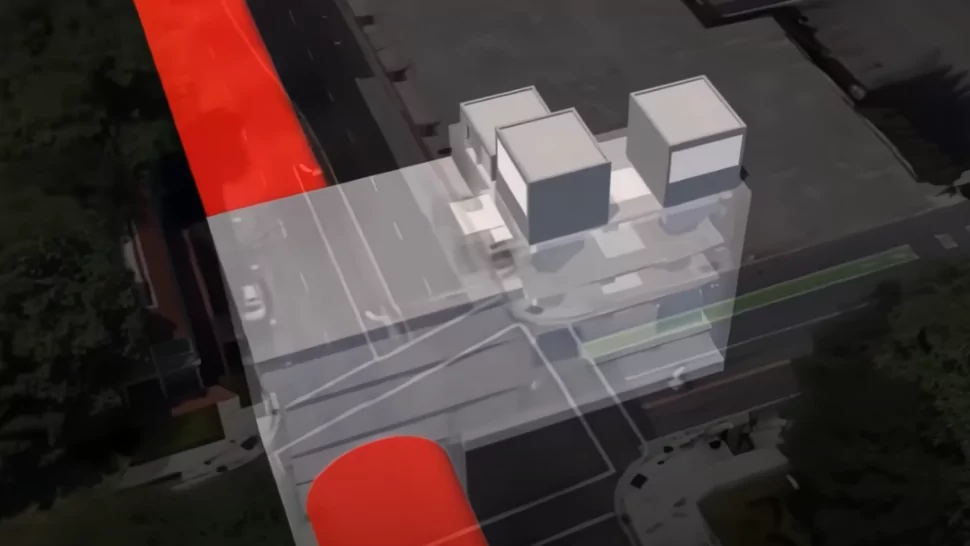
Traditionally, the subway would involve two tunnels, each with a single track, but in an attempt to minimize disruption, one larger tunnel will be used with space for both lines. It’s called a single-bore tunnel, and it’s the first time a system like this has ever been used for a US subway. Tunneling is expected to run 24 hours a day to try to limit delays!
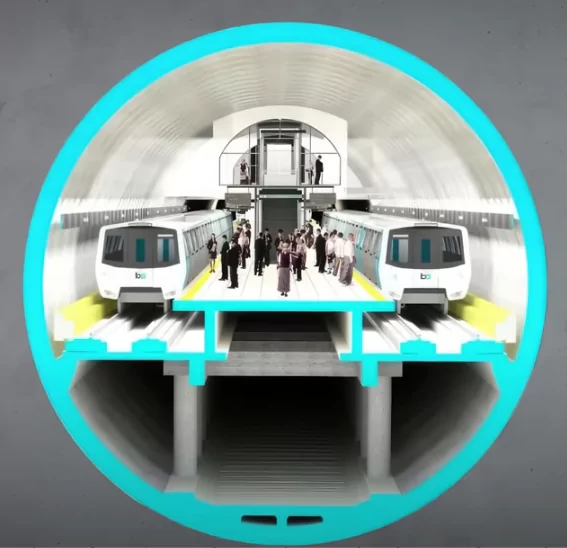
$15B: Mumbai-Ahmedabad High-Speed Rail
Next, we take a look at India. This is the Mumbai-Ahmedabad High-Speed Line. This project is set to be India’s first ever high-speed railway, and at $15 billion, it’s one of their biggest rail investments ever. The Line will link the major economic hubs of Mumbai and Ahmedabad and reduce travel time from 8 hours to just 2.
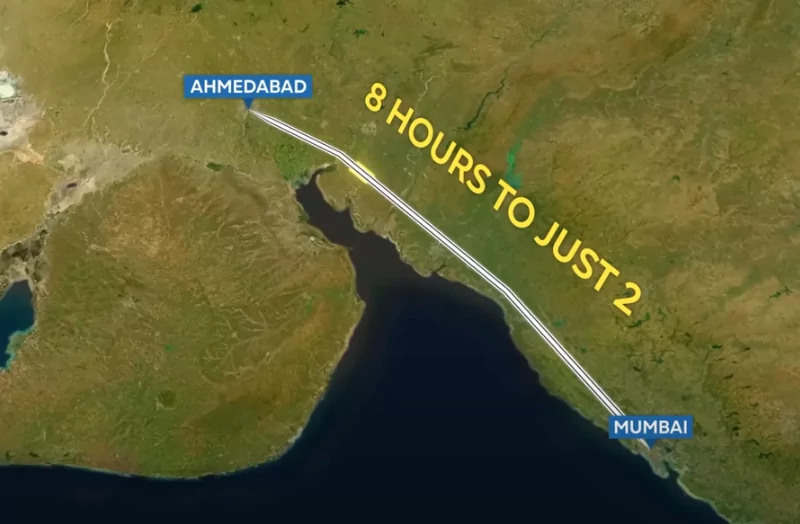
The line will stretch over 500 km and run mostly on viaducts to avoid the roads, railways, rivers, and farms in its way. In densely populated Mumbai, it will dip down and run in underground tunnels, with a 2-kilometer stretch even going under the sea.
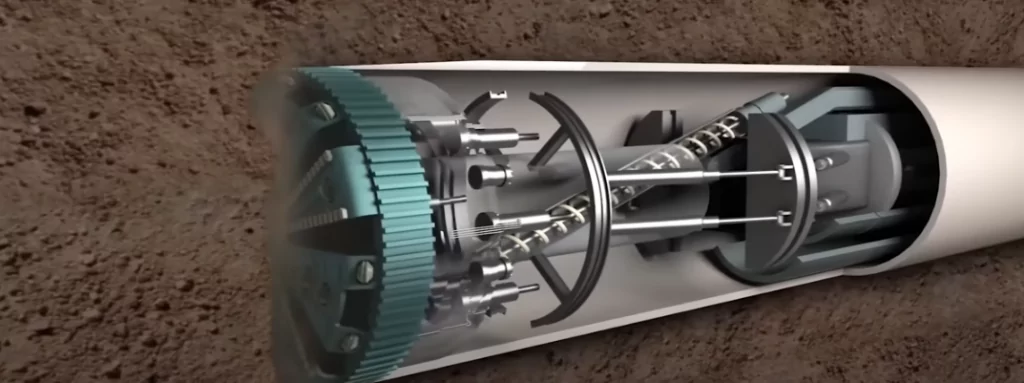
Despite it being one of Prime Minister Modi’s flagship infrastructure projects, progress has been slow due to problems in land acquisition, and construction only began in 2020. Nevertheless, the first stage of the line is due to open in 2026.
Advertisement:
$16B: Gateway Program
Back over to the USA for number 12, this time on the East Coast, with the Gateway Program. The Gateway Program is a $16 billion investment project designed to completely overhaul, repair, and futureproof rail transport between Newark, New Jersey, and New York.
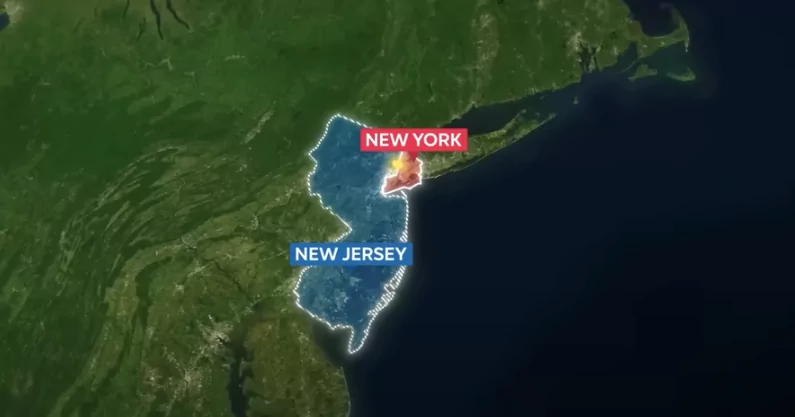
This is arguably the most important section of the Northeast Corridor, America’s busiest rail line, but much of its crumbling infrastructure is over 100 years old!
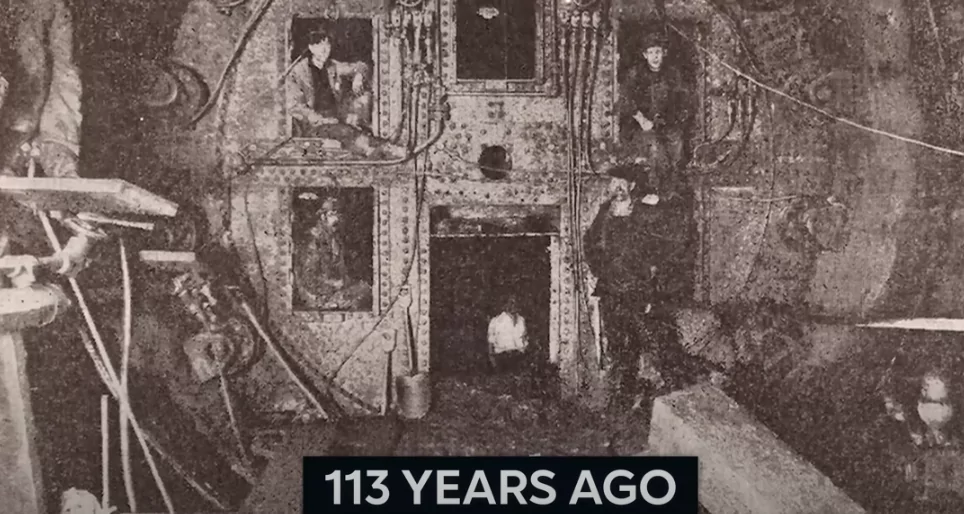
The Gateway Program will redesign bridges, stations, tunnels, and tracks to modernize the whole railway system with minimal disruption to the hundreds of thousands of daily passengers.
$19B: JFK Airport Expansion
At $19 billion, next up is a redevelopment program to completely modernize the biggest airport in the New York area, JFK. In 2023, the airport served 62 million passengers, a 12% rise from the previous year. But despite its popularity, JFK is old, overcrowded, and poorly organized.
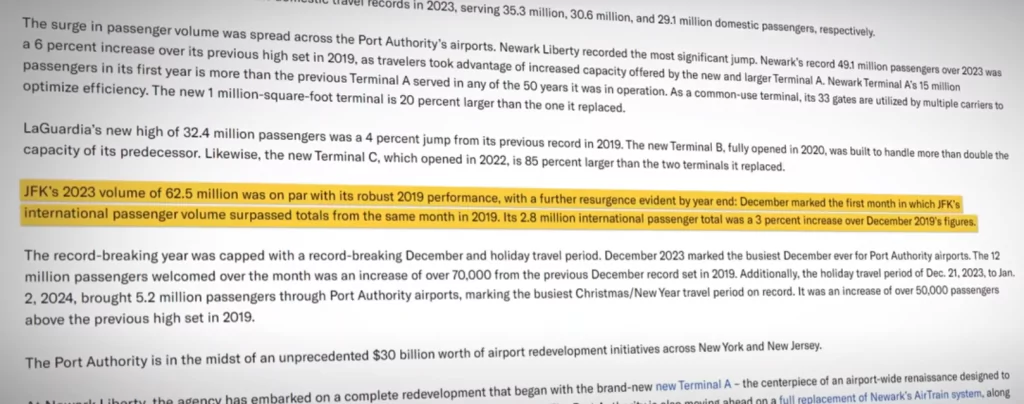
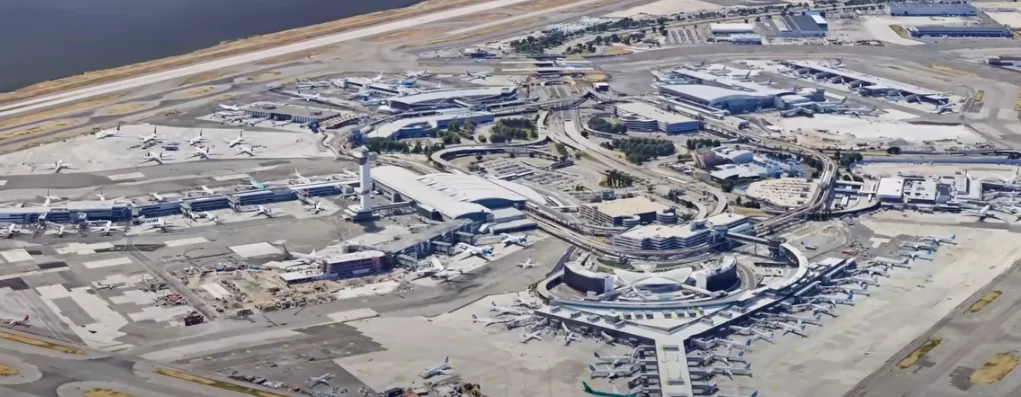
The current renovation aims to turn it into a state-of-the-art facility and increase capacity to 75 million people by 2030. Terminals 1 and 2 are being replaced by the brand new, 260,000 m2 “Terminal One.” With 23 gates, it’ll deal exclusively with international flights and take up half of the entire budget! There are huge extensions planned for the other terminals, as well as a complete redesign of the surrounding road network.
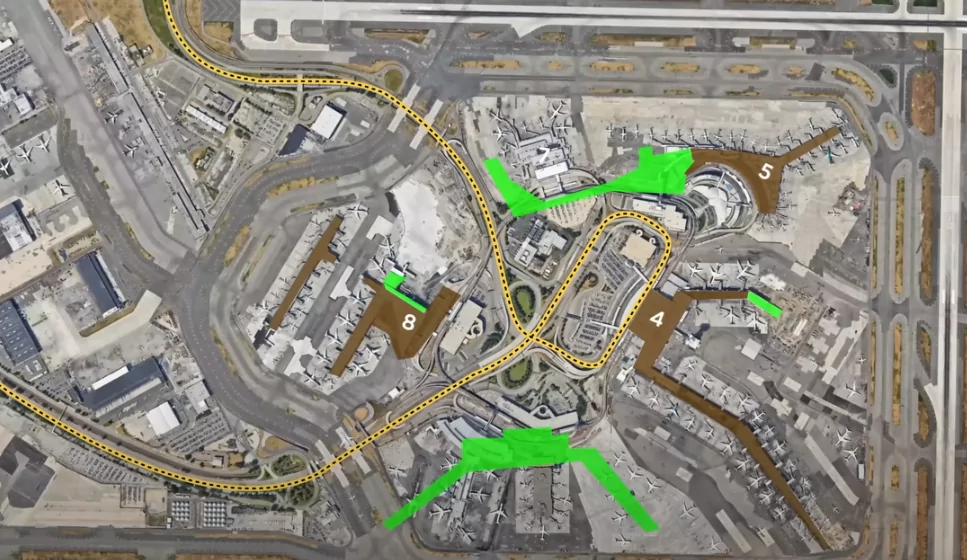
If all goes well, JFK will seamlessly integrate international travelers into the New York metropolitan area. Construction was due to start in 2020 but had to be delayed. Nevertheless, the project is scheduled for completion by 2030.
$25B-IITER
At $25 billion, our number 10 is what many are calling the most complicated machine in human history: the International Thermonuclear Experimental Reactor, or ITER. This massive international collaboration aims to recreate the nuclear fusion that happens inside the Sun. The reactor is being designed as a proof-of-concept, meaning it won’t actually be used to generate electricity. If it works, the technology could eventually be rolled out across the world to produce huge amounts of energy with very little waste.
The technical challenge is enormous. To pull it off, temperatures inside the reactor need to reach between 150 and 300 million degrees Celsius, ten times hotter than the sun. This is one of the most advanced projects ever undertaken, and, with so much money going into it, it’s also being called the most expensive experiment in the world.
$25B: Sydney’s New Railway
At number 9, we have Australia’s biggest ever investment in urban rail: the $25 billion Sydney Metro. Work is currently underway to build Sydney a brand new subway system, made up of 4 lines, 46 stations, and 116 km of track. The network will bring the city together, changing the way residents travel and integrating the central business district with the suburbs. High-speed driverless trains will run every 4 minutes during peak times, making it super efficient for commuters.
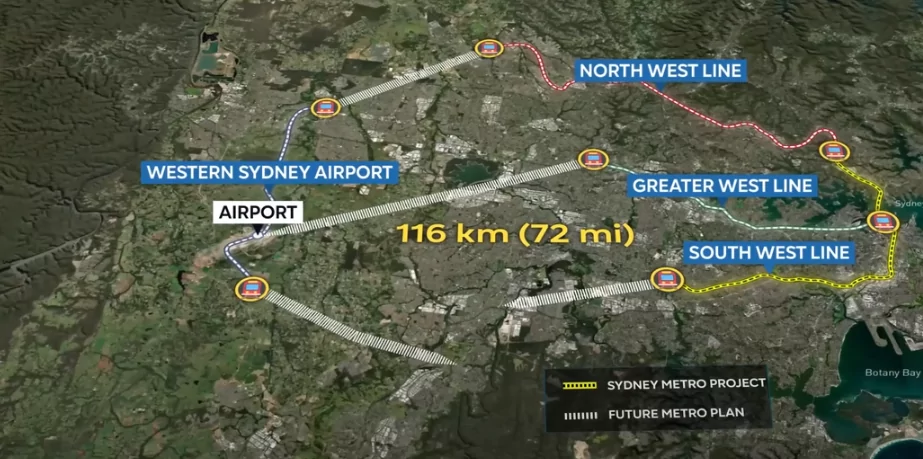
But building all of this underneath Australia’s biggest city isn’t easy, especially under the world-famous Sydney Harbour. Digging underneath the bay required state-of-the-art technology, including tunnel boring machines. Kathleen is named after Kathleen Butler, the “Godmother of Sydney Harbour Bridge.”
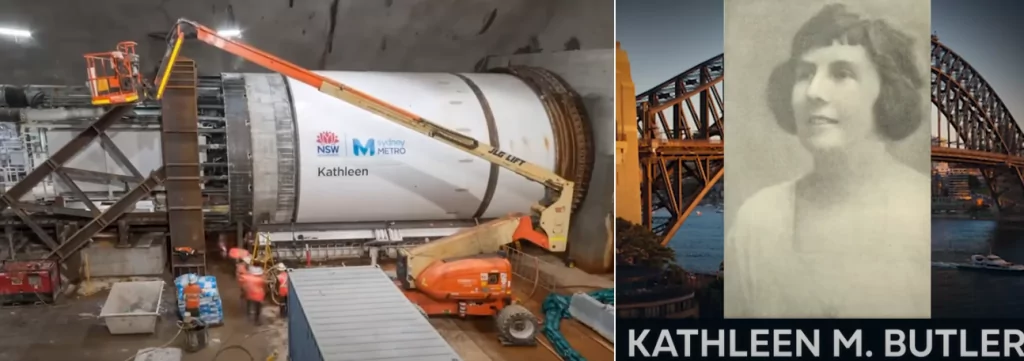
Kathleen dug two 900-meter tunnels under the bay, at depths of up to 40 meters below sea level! All of the tunneling was finished in 2020, and the first line actually opened the year before. Phase 2 of the build, the City and Southwest Project, is due to open this year, with the remaining two phases scheduled for completion by 2030.
$31B: LNG Canada
Number 8 is one of the biggest private-sector investments in Canadian history: LNG Canada. This gigantic, $31 billion project in Kitimat, British Columbia, will transform natural gas into liquid form and prepare it for export. The project includes a marine terminal and a rail yard, as well as two enormous storage tanks measuring 225,000 cubic meters each.
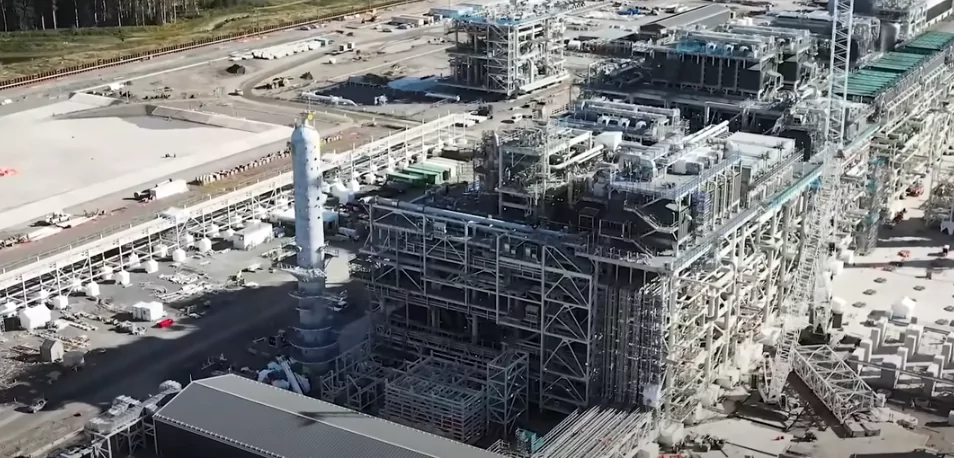
Once operational, the facility will be able to process 14 million metric tons of liquified natural gas (LNG) every year. This could result in over a billion dollars of revenue, based on average market prices.
The gas will be transported from northeast BC in a 670-kilometer pipe before being liquified and exported from Kitimat.
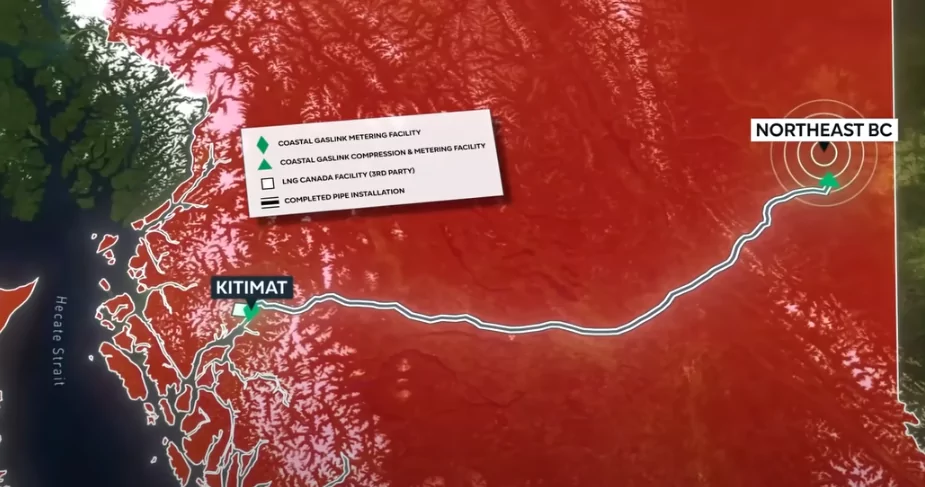
Sales will mostly be to Asia as its coal-heavy economies transition to greener alternatives, but several European countries have also expressed interest. Commercial operations are expected to start in 2025, with recent reports indicating that tests will start this year. Overall, LNG Canada could spell a new chapter for the gas industry in Canada, making them a vital player in the international market and shoring up domestic energy security.
Advertisement:
$35B: Grand Paris Express
We’re in France for number 7 with the Grand Paris Express. At a cost of $35 billion, this is one of the biggest infrastructure projects currently underway in Europe and involves an enormous extension to Paris’s metro network. Four new lines, 200 km of track, and 68 new stations are being added to adapt the public transport system to the demands of the 21st century.
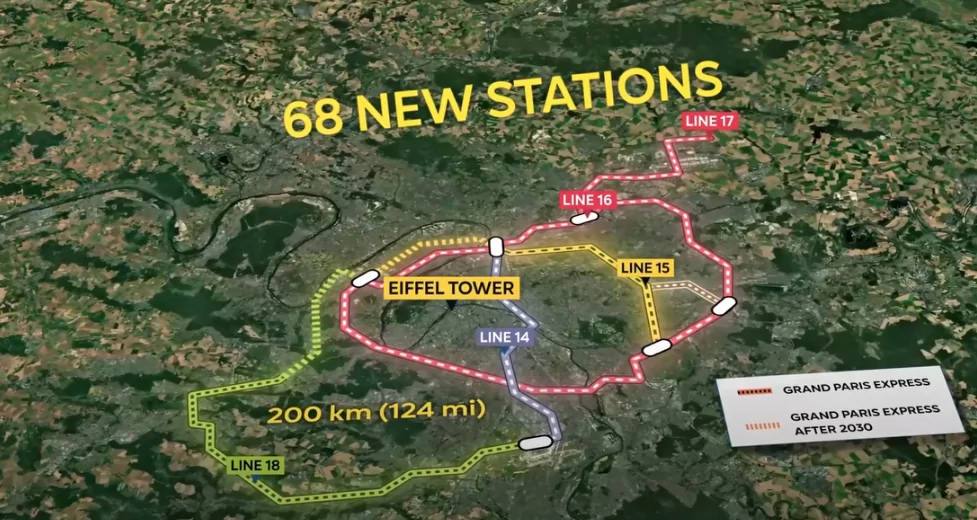
The new lines will fully integrate the Charles de Gaulle and Orly airports, as well as Paris’s vast suburbs, with the city center.
Construction here comes with all the usual challenges of building in a densely packed urban area, such as utility relocation, heritage preservation, and complicated stakeholder management. But the Grand Paris Express has the added challenge of the Paris Olympics, which are just around the corner in 2024. If completed on time, the new lines will be able to carry 2 million people per day and significantly reduce travel times across the whole region, bringing the City of Lights into the future.
Hinkley Point C ($57 Billion)
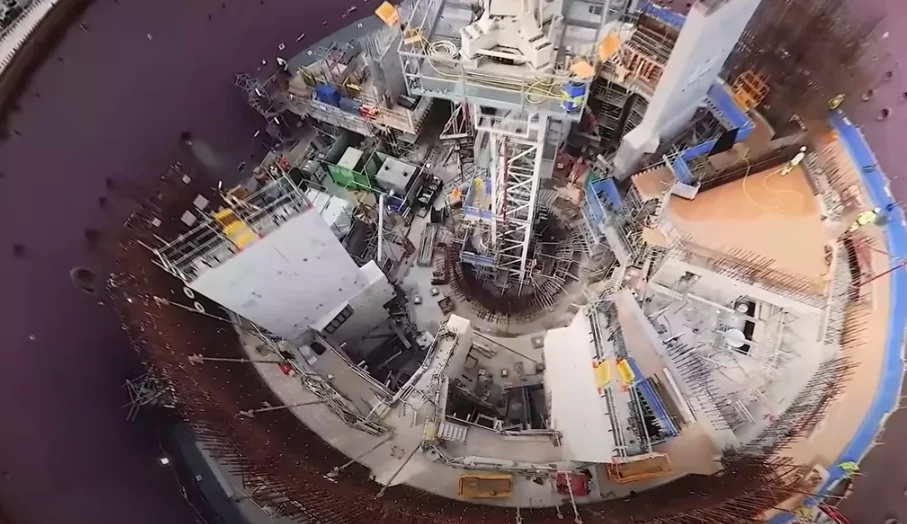
Hinkley Point C stands as the UK’s first nuclear power plant in three decades, with construction commencing in 2016. Estimated at $57 billion, this monumental energy infrastructure aims to power 6 million homes upon completion, now scheduled for 2031 due to setbacks from COVID-19, Brexit, and regulatory adjustments.
High Speed 2 (HS2) ($84 Billion)
HS2, the UK’s ambitious high-speed rail network linking London with Birmingham (Interchange), Manchester and Leeds.
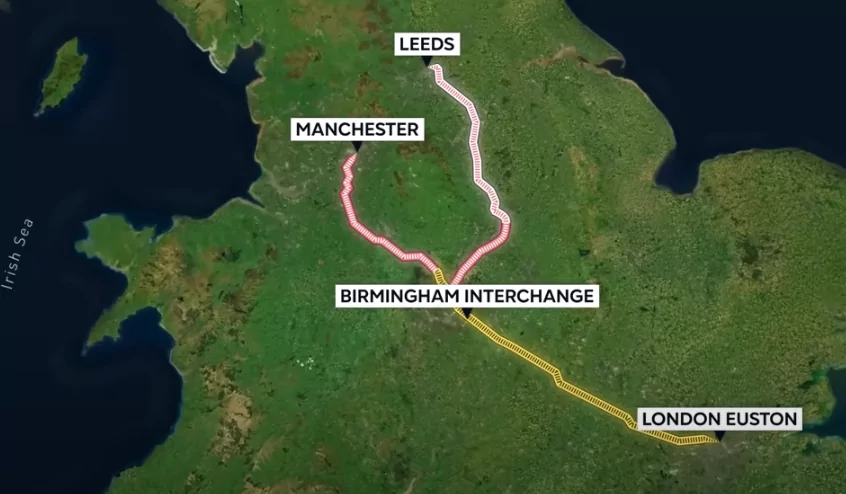
Originally budgeted at $47 billion, has faced soaring costs, reaching approximately $84 billion. Delays and budget cuts have resulted in postponements for completion, now projected between 2029 and 2033, with lines to Manchester and Leeds canceled.
Xiong’an New Area ($95 Billion)
Next on the list is a Chinese megaproject to build a city of the future! It’s known as the Xiong’an New Area and takes the number 4 spot with an estimated budget of $95 billion. Despite it being one of the most expensive and ambitious projects underway anywhere in the world, it hasn’t received much attention yet.
Xiong’an will be a smart, green city designed to ease the pressure on an overpopulated Beijing and equipped with advanced systems like digital roads and smart city planning.
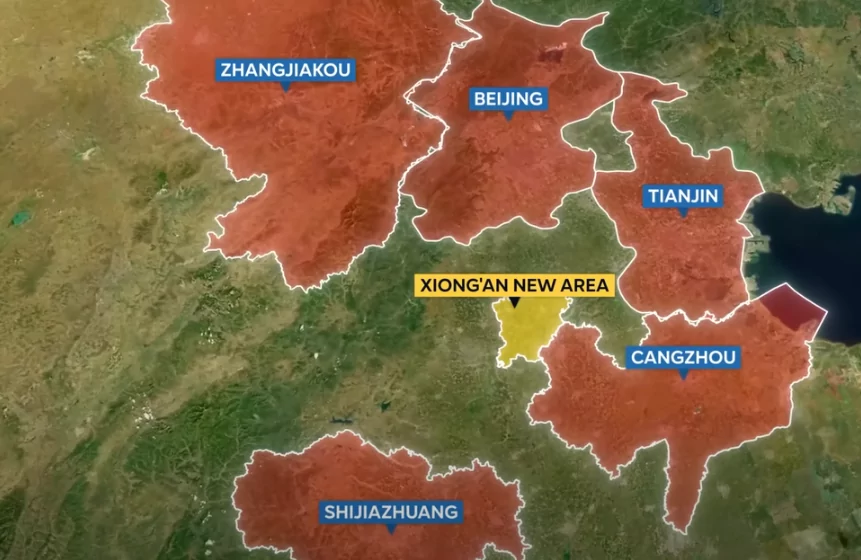
If there’s a fire, for example, the city-operations platform will immediately calculate the coverage area and how many people are affected. Then it’ll choose a route for the fire service based on current traffic conditions.
In true Chinese fashion, the city has been built at record pace. In just seven years, 3000 buildings have shot up. They’re not all finished yet but it’s still insane how fast they’re moving. Drone footage shows an industrial park, technology centre, schools, and high-speed railway lines all underway, not to mention countless apartment and office blocks.
Over 1,000,000 people are already living there but that’s set to increase to 5 million by 2035.
Chūō Shinkansen ($100 Billion)
Number 3 is Japan’s $100 billion dollar Chuo Shinkansen.
The bullet train.
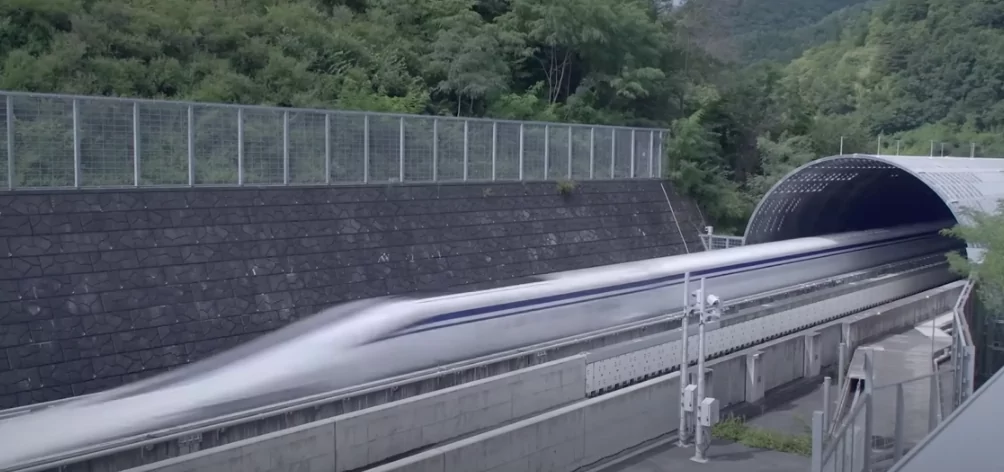
The new line from Tokyo to Osaka will use maglev technology to reach speeds of up to 500 km per hour! The trains will hover slightly above the track, giving passengers a super smooth ride, despite the insane speeds. This train in China uses the same technology and the coin barely moves at all!
The construction is made up of two phases. Tokyo to Nagoya, and Nagoya to Osaka.
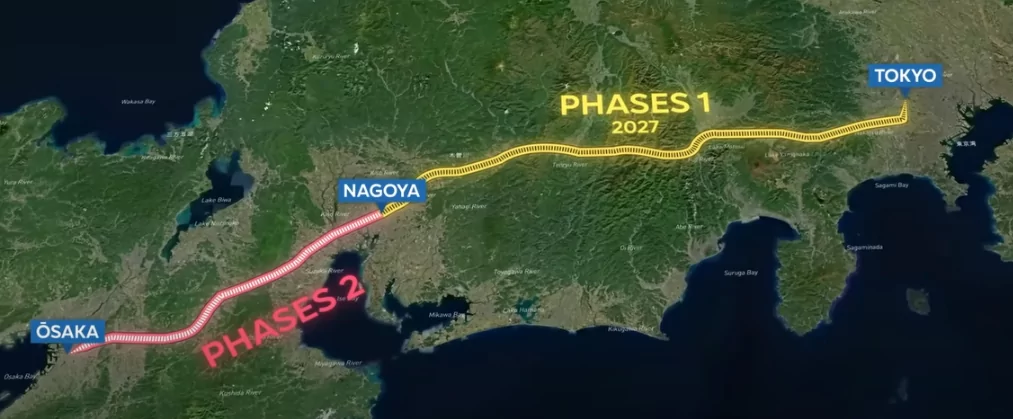
The first was due to be ready by 2027 but environmental concerns have recently changed the whole trajectory of the project.
86% of the Tokyo to Nagoya line will run in tunnels and one of the prefectures along the route, Shizuoka, is concerned that the Oi River will leak into them. As a result, they haven’t given their permission for the project to go ahead, so construction has been pushed back, possibly until 2034.
That being said, Shizuoka governor Heita Kawakatsu resigned last month and it’s not impossible that his successor sees another way forward.
Advertisement:
The second phase extends from Nagoya to Osaka, which is planned for completion by 2037. It promises to cut travel time between Nagoya and Osaka to just 40 minutes. However, as with the first phase, this section will involve extensive tunneling, and similar challenges as well. So it remains to be seen how they can solve these issues.
California High-Speed Railway: Connecting California’s Future ($128 billion)
Discover California’s ambitious high-speed railway project, projected to cost up to $128 billion, making it one of the largest megaprojects in construction today. Spanning 1200 km, this cutting-edge network will link major urban centers across the state with state-of-the-art trains traveling at speeds up to 350 km/h.
Imagine traveling from San Francisco to Los Angeles in just 2 hours and 40 minutes—faster and more convenient than flying or driving. If successful, this project aims to reduce air travel by a third and slash carbon emissions by three million tonnes.
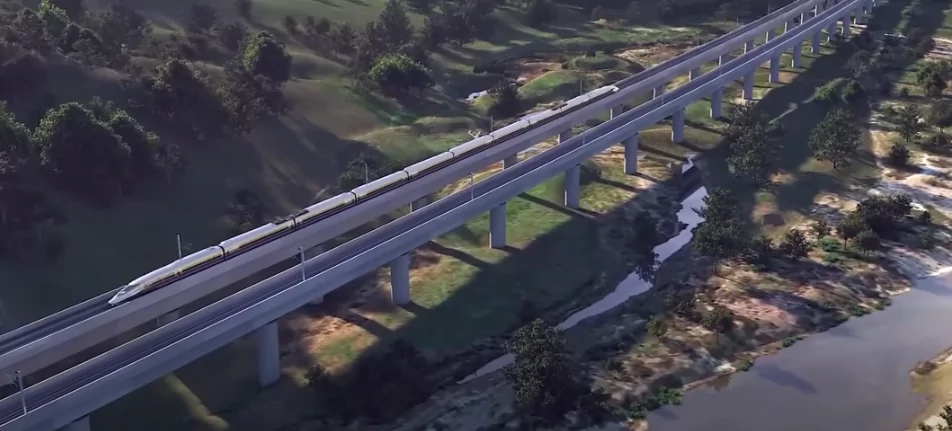
First conceived in 1996, the project gained voter approval in 2008 with an estimated cost of $33 billion and a completion date of 2020. However, challenges including legal battles, environmental reviews, and mismanagement have delayed progress. The first section is now slated for completion in 2030, with costs soaring well beyond initial estimates.
Despite setbacks, the High-Speed Rail Authority remains steadfast in its belief in the project’s potential. By integrating California’s cities like never before, the network promises to foster economic growth, cultural exchange, and social cohesion. It will facilitate affordable inland living with easy access to coastal job markets, projected to serve over 28 million passengers annually by 2040—more than double America’s busiest railway today, the Northeast Corridor.
While progress has been gradual, this megaproject continues to forge ahead, paving the way for a more connected and sustainable future for Californians.
NEOM ($1.5 Trillion)
Saudi Arabia’s NEOM initiative envisions transforming its desert and coastline with a staggering $1.5 trillion investment. The flagship project, The Line, initially planned as a 170 km urban corridor, faces scaling back controversies, potentially reducing it to just 2.4 km by 2030. Despite financial and logistical challenges, NEOM proceeds with ambitious developments like the Trojena mountain resort and Sindalah island resort.
